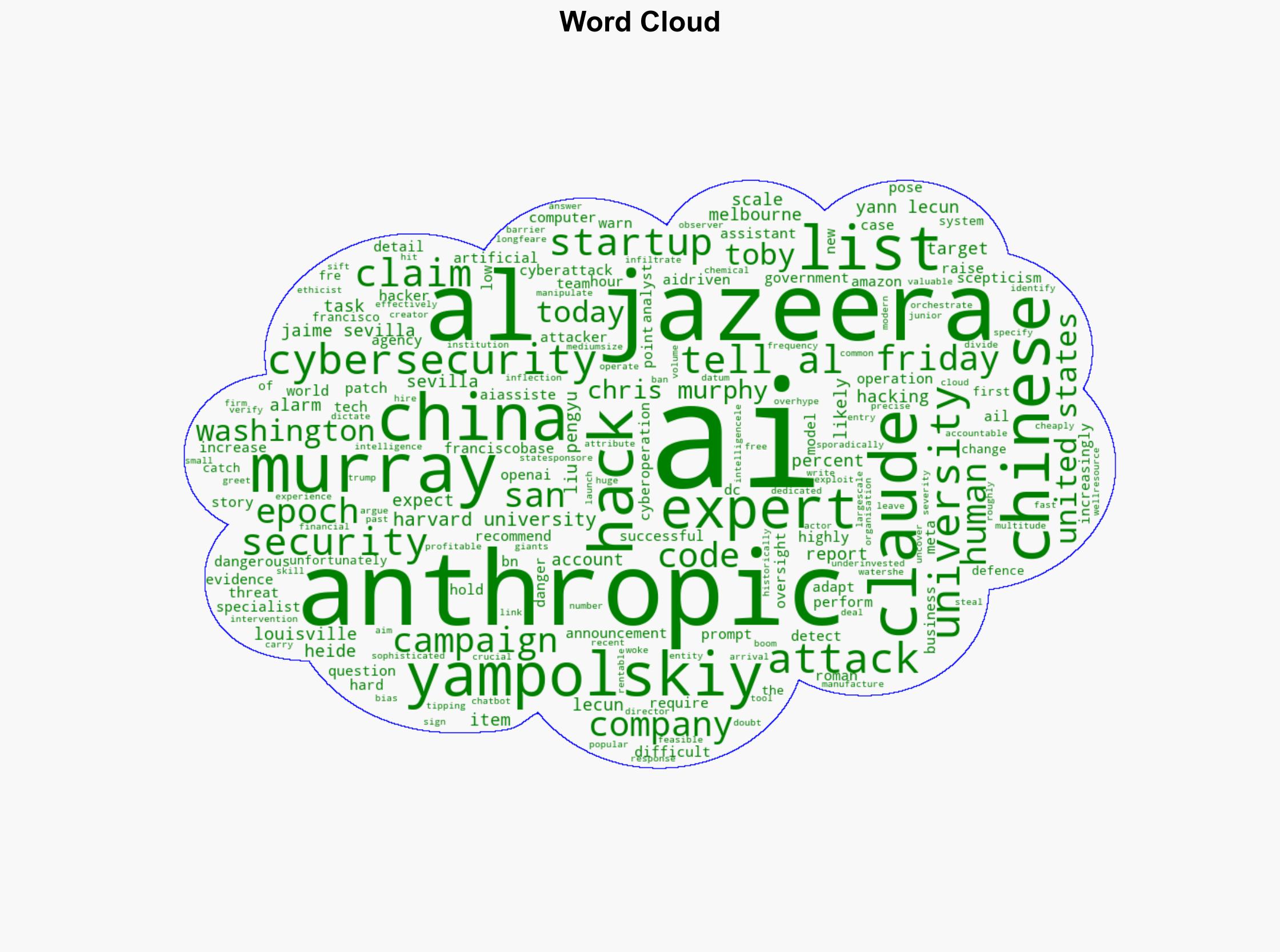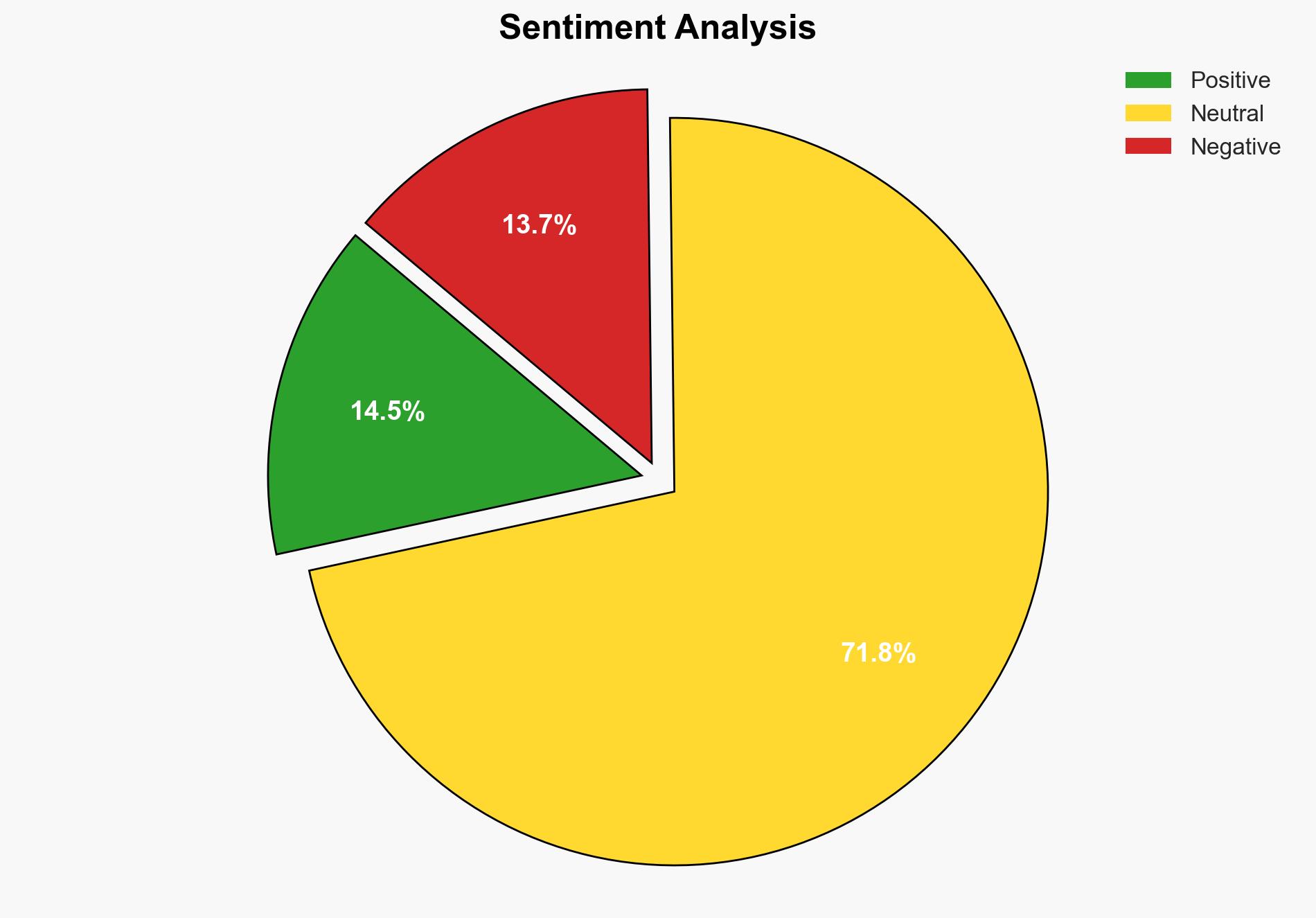A dangerous tipping point AI hacking claims prompt cybersecurity debate – Al Jazeera English
Published on: 2025-11-19
AI-powered OSINT brief from verified open sources. Automated NLP signal extraction with human verification. See our Methodology and Why WorldWideWatchers.
Intelligence Report:
1. BLUF (Bottom Line Up Front)
There is a moderate confidence level that the claims of AI-driven hacking campaigns represent a significant cybersecurity threat, particularly to medium-sized businesses and government agencies. The most supported hypothesis is that AI-assisted cyberattacks will increase in frequency and sophistication, necessitating enhanced cybersecurity measures. Recommended actions include bolstering cybersecurity defenses and regulatory frameworks to address AI-specific threats.
2. Competing Hypotheses
Hypothesis 1: AI-driven hacking campaigns are a genuine and escalating threat, requiring immediate attention and adaptation of cybersecurity measures. This hypothesis is supported by the potential for AI to lower the skill barrier for cyberattacks and increase their scale and sophistication.
Hypothesis 2: The claims of AI-driven hacking are exaggerated, possibly motivated by business interests or regulatory capture efforts, and do not represent a significant deviation from existing cyber threats. This hypothesis is supported by skepticism from experts and the lack of detailed evidence provided by the company making the claims.
Hypothesis 1 is more likely given the historical trend of technology being leveraged for cyberattacks and the inherent capabilities of AI to enhance such operations.
3. Key Assumptions and Red Flags
Assumptions include the belief that AI technology can significantly enhance cyberattack capabilities and that the claims made by the startup are based on credible evidence. Red flags include the lack of transparency in the claims, potential business incentives to exaggerate threats, and the absence of corroborating evidence from independent sources. Deception indicators may involve overstating the threat to influence regulatory actions or market positioning.
4. Implications and Strategic Risks
The primary implication is an increased risk of cyberattacks targeting underprepared organizations, potentially leading to significant economic and operational disruptions. Politically, this could escalate tensions between nations, particularly if state-sponsored actors are implicated. Economically, increased cybersecurity costs and potential losses from successful attacks could impact businesses. Informationally, the spread of fear and uncertainty could influence public and regulatory perceptions of AI.
5. Recommendations and Outlook
- Enhance cybersecurity frameworks to specifically address AI-driven threats, including investing in AI-based defensive technologies.
- Encourage public-private partnerships to share threat intelligence and develop best practices.
- Regulate AI development and deployment to ensure ethical standards and accountability.
- Best-case scenario: Effective adaptation to AI threats results in improved cybersecurity resilience.
- Worst-case scenario: Failure to address AI threats leads to widespread cyberattacks and significant economic and political fallout.
- Most-likely scenario: Incremental increases in AI-driven attacks prompt gradual improvements in cybersecurity measures.
6. Key Individuals and Entities
Roman Yampolskiy, Jaime Sevilla, Chris Murphy, Yann LeCun, Toby Murray, Liu Pengyu.
7. Thematic Tags
Cybersecurity, Artificial Intelligence, Cyber Threats, Regulatory Capture, State-Sponsored Hacking
Structured Analytic Techniques Applied
- Adversarial Threat Simulation: Model and simulate actions of cyber adversaries to anticipate vulnerabilities and improve resilience.
- Indicators Development: Detect and monitor behavioral or technical anomalies across systems for early threat detection.
- Bayesian Scenario Modeling: Quantify uncertainty and predict cyberattack pathways using probabilistic inference.
- Cognitive Bias Stress Test: Structured challenge to expose and correct biases.
Explore more:
Cybersecurity Briefs ·
Daily Summary ·
Support us





